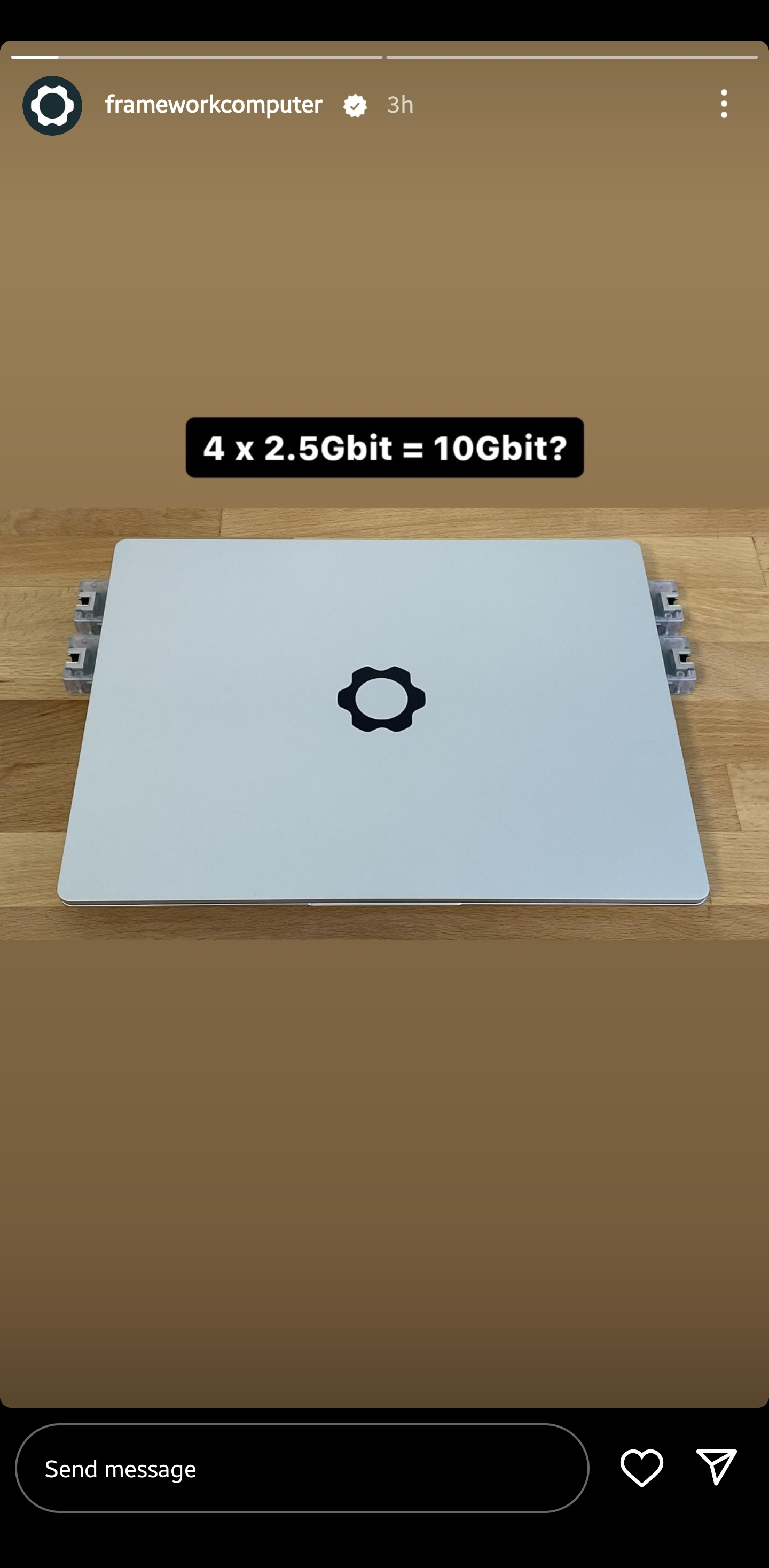Link Aggregation enjoyers:
Can I wire them in serial?
I want to know if this can actually work now.
You could do NIC teaming and get 10gb/s overall (on the network link - idk how they route USB/NIC/PCIe/etc.). You wouldn't get that on a single connection that way, though. You'd have to either be content with multiple connections, or not team them and use a multi-path aware protocol like iSCSI.
I'm curious how close your total throughput would be to the theoretical 10Gb/s, assuming it was used with a switch that could keep up. Protocol overhead with Ethernet/TCP/IP is bad enough without NIC teaming to say nothing of the total throughput of the Thunderbolt transceiver
I don't know if I'll remember, but I'll be able to try this in a few days, I have the same laptop, 2x 2.5G USB NICs + another 2 already in the mail, and also a 10G network.
If you're wondering, my intention for ordering them definitely wasn't for this, but more just for places around the house I can plug into, without having the framework NIC hanging off my laptop.
I'm invested now. Definitely report back!
Same
Alright, so testing with iperf3 to a 10G host:
- Single Direction - 7.06 Gbps RX (2.35, 2.35, 1.25, 1.11 Gbps individually), 9.4 Gbps TX (All 2.35 Gbps)
- Bidirectionally - 8 Gbps Total, 1.538 Gbps RX & 6.55 Gbps TX (315/1220, 232/2080, 256/1520, 735/1730 Mbps individually)
4x USB NICs on the laptop, 1x Solarflare SFN5122F NIC on the desktop, there were 2 10G switches in between which may have affected the speeds slightly.
Also I can get 4.6 Gbps total (2.3/2.3) bidirectionally on one interface, so I would have expected ~16 Gbps with 4, so that's interesting I guess? My desktop can do 18.6 Gbps total (9.55/9.11) to my server so idk.
Edit: I was using 1500 MTU, I don't feel like testing again with jumbo frames.
Fascinating, especially that the RX direction saw such varied speeds across the various NICs. Guess that switch wasn't too keen on trying to split the packets evenly. Also -- 1.5Gbit RX in bidirectional mode? ...all I can say is yikes.
Very good to know.
@[email protected] -- you were interested in this too
Guess that switch wasn't too keen on trying to split the packets evenly.
Yeah probably, I was just using one of those cheap 2x 10G + 4x 2.5G switches that ServeTheHome recently did a video on, so I would not be surprised if that was the bottle neck here.
I could maybe try buying a few more SFP+ transceivers and using my more trustworthy switches, but that seems too expensive for a project like this.
Why not? A TCP packet is 1500 bytes long, if you are not using jumbo frames, and every packet goes through another interface. You'll need a smart switch for maximum speed, though.
So, this is Windows focused, but it goes over the abilities and shortcomings of different types of NIC teaming and the shortcomings that I was referring to are independent of OS.
https://www.microsoft.com/en-us/download/details.aspx?id=30160
This meme was posted by the LACP gang
196
Be sure to follow the rule before you head out.
Rule: You must post before you leave.
